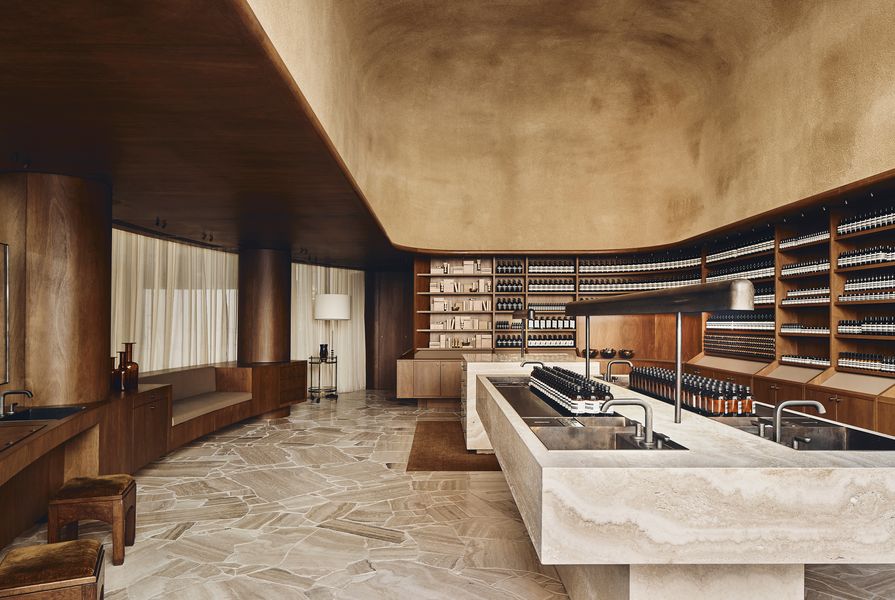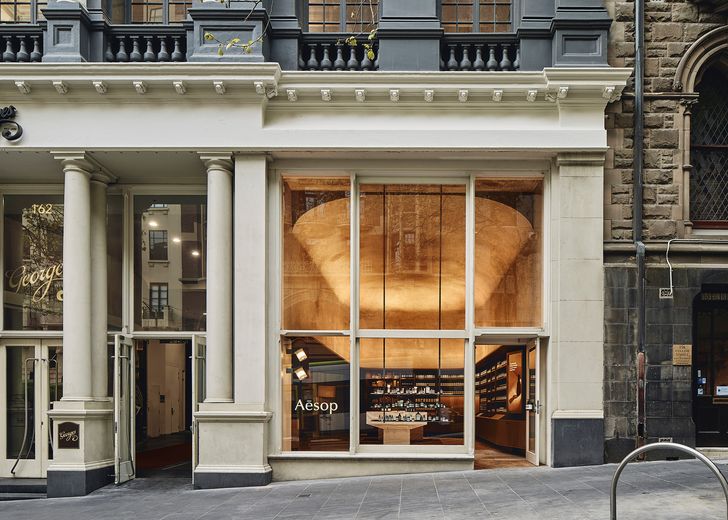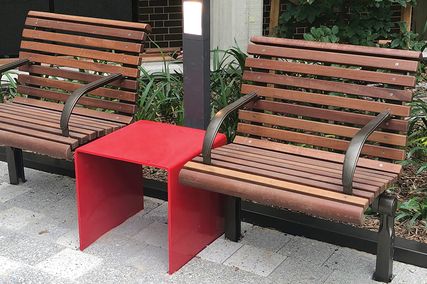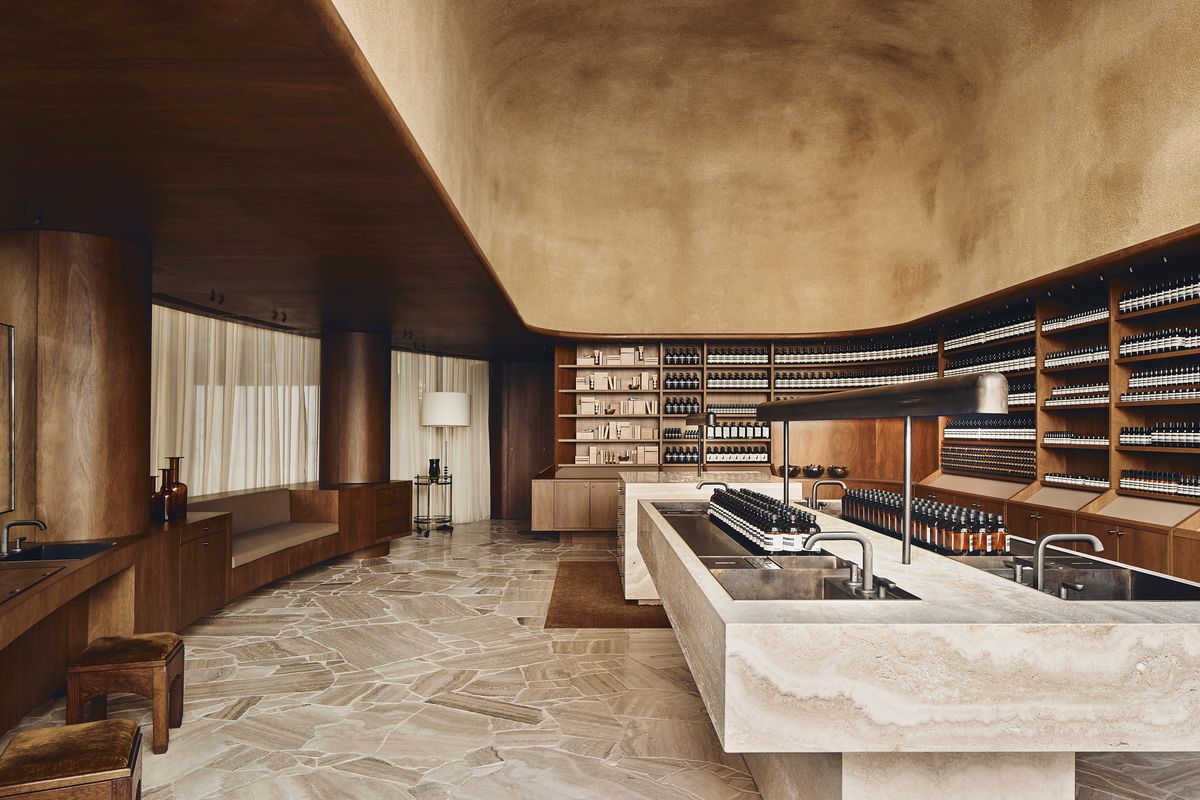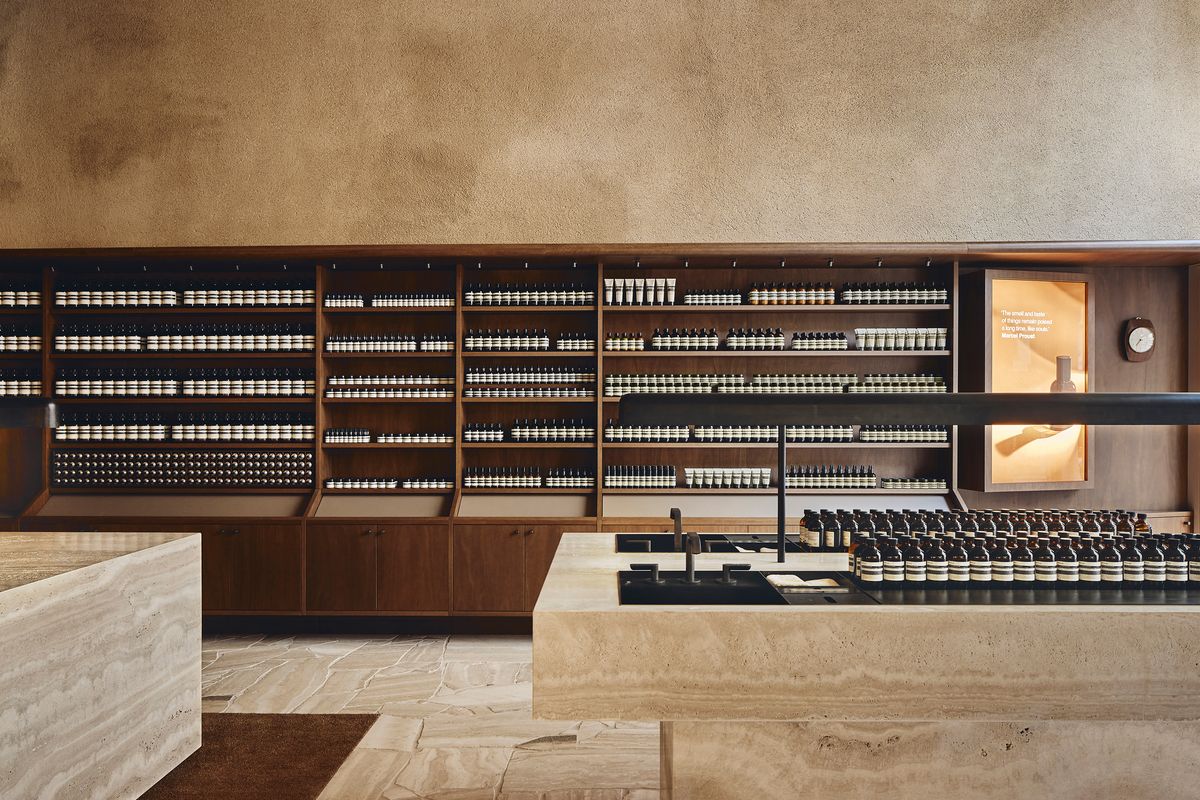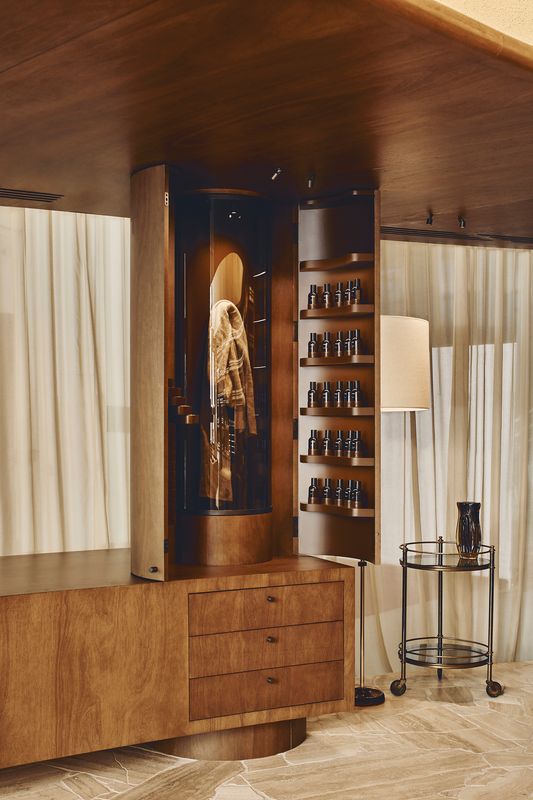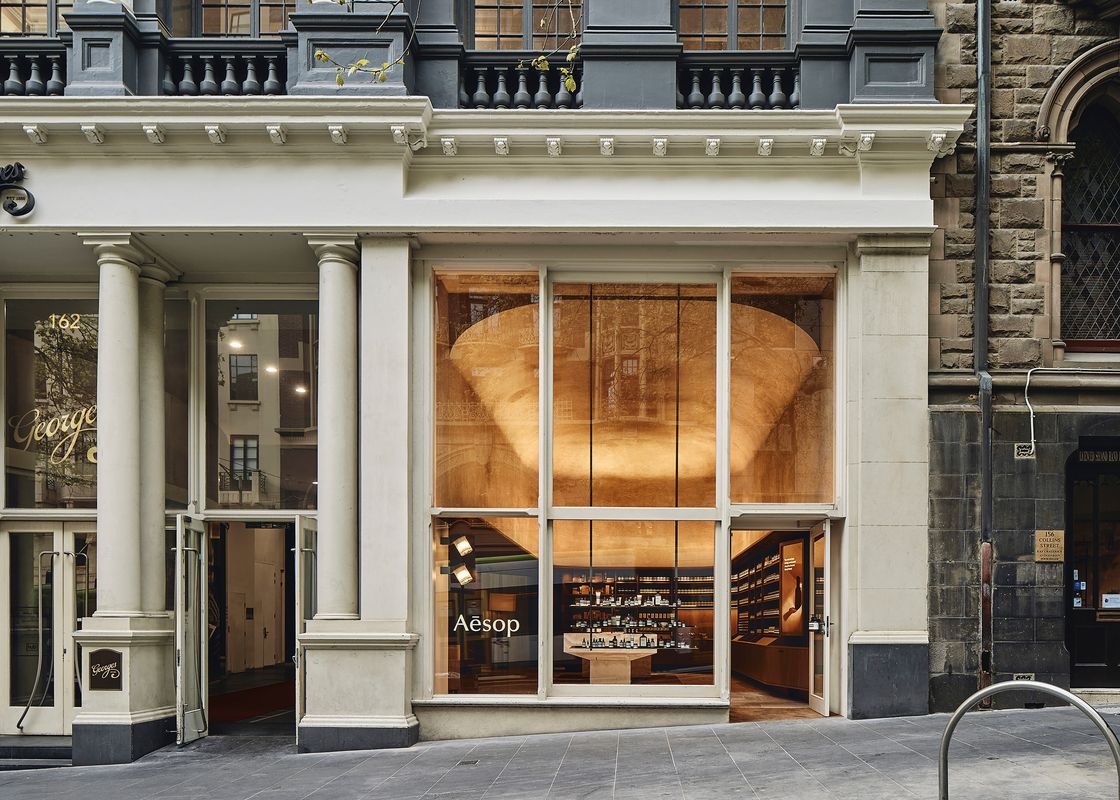To enter the new Aesop store in the historic Georges building on Melbourne’s Collins Street is to be drawn into another, quieter world. This feeling is the outcome of a store design by Clare Cousins Architects that capitalizes on the building’s significant architectural heritage and its broader geographical location.
The retreat-like space belies the complexity of the brief. Aesop approached the practice to request a retail interior consistent with the cosmetic brand’s well-defined aesthetic – yet also responsive to the distinct and storied site. But with the company’s long history of fitouts – and its more than 280 stores worldwide – the challenge was to create a design that was at once consistently on-brand and uniquely attuned to the Collins Street space.
Built in the late 1800s, the Georges building previously housed the Georges department store, one of Melbourne’s earliest major retailers. Over its many decades, the building hosted multiple tenants and developed a strata of ad hoc renovations – and while the historical facade of the building had been maintained, views through the store’s windows had been obscured, resulting in little connection between store and street.
Custom-designed blackened-steel joinery displays products and adds considered tactility to the material palette.
Image: Peter Bennetts
Restoring that connection was an important aspect of Aesop’s brief. Part of the original Hoddle grid laid out in the first survey of Melbourne, Collins Street’s east end houses many examples of neoclassical architecture and is just around the corner from major civic spaces, including the Athenaeum Library and the State Library Victoria. Yet the store’s existing access meandered through the building’s foyer, a rather uninspiring alteration from the 1990s that failed to capitalize on the building’s heritage.
Drawing heavily on references to nearby nineteenth-century architecture and the Georges building, Clare Cousins designed the store – and its new entry – to strengthen the shop’s immediate engagement with its surrounds. The entry now opens directly onto Collins Street, as lead architect Oliver Duff explains: “We wanted to create a dialogue within the space, particularly with the double-height windows and the facade. When you are coming up Collins Street on the tram in the evening and when the [store] lights are on, we wanted people to be able to look across the street and see the store like a lantern.”
A lantern-like glow bathes the cathedral ceiling, visible through the store’s newly reinstated Collins Street frontage.
Image: Peter Bennetts
Reinstating the site’s double-height windows and creating the dramatic domed roof was a major move. Stepping in from the street, visitors find a welcome refuge from the ongoing flurry. The cathedral-like ceiling nurtures an air of calmness and reverence. Walls plastered with a sandy-hued render mixed with crushed recycled glass bottles lend an earthy vibe. Cabinetry crafted from Australian blackbutt provides display space and frames the main room. Two weighty travertine benches offer visitors the opportunity to test products while a ground plane of travertine offcuts provide a satisfying solidity underfoot. Along the interior window, a translucent curtain mimics the curved glass, permitting tantalizing glimpses from within and without.
Adjoining the central space, a lower ceiling frames open booths, inviting visitors to one-on-one consultations with a sense of backstage theatricality somewhat akin to a powder room. While the store’s footprint is small, the fitout creates a series of distinct spaces, each with its own air, guiding visitors on where to browse, try out products, sip tea or interact with staff. “We created a low ceiling [at the left side] to give it that domestic, intimate quality, whereas out [in the main space] the ceiling has this [grander] civic gesture,” says Duff.
Both the store’s double-height windows and street connection have been restored.
Image: Peter Bennetts
Meanwhile, small yet powerful moves infuse the design with the brand’s identity. The “armoire,” or fragrance cabinet, is increasingly becoming a feature of Aesop stores. At Collins Street, this element has been cleverly integrated within a timber column to create a structure that conceals the building’s existing supports. Custom-designed and crafted blackened-steel joinery contributes carefully considered tactility to a refined material palette.
The joy of Aesop Collins Street lies in this balanced aesthetic, where the neoclassical past informs but doesn’t overwhelm the new retail space. Each element Clare Cousins Architects has installed here feels vintage yet sleek, timeless yet contemporary. By emphasizing context, detail and craftsmanship, the design team has given Aesop an interior that expresses the iconic brand – uplifting, sophisticated and grounded – and celebrates the site’s history.
Products and materials
- Walls and ceilings
- Recycled bottle render. Recycled Aesop amber glass.
- Joinery
- Custom fragrance cabinet in blackbutt and amber glass. Custom Zena Travertine sales counter and tester sink. Custom blackened-steel trapeze.
- Flooring
- Palladiana-style travertine and recycled stone. Birrus coir matting.
- Lighting
- Surface-mounted mini spotlight from Ambience. Cavedio outdoor wall lamp by Angelo Mangiarotti for Artemide. Custom table lamps by Clare Cousins Architects and B-TD.
- Furniture
- Vintage bar stools and bar cart.
- Bathroom
- Icona Deco basin set from Rogerseller. Custom blackened-steel tester sinks and ensuites.
Credits
- Project
- Aesop Collins Street by Clare Cousins Architects
- Design practice
- Clare Cousins Architects
Melbourne, Vic, Australia
- Project Team
- Clare Cousins, Oliver Duff, Tom Goodchild, Yaseera Moosa
- Consultants
-
Builder
EMAC Constructions
- Aboriginal Nation
- Built on the land of the Wurundjeri Woiwurrung people of the Kulin nation.
- Site Details
-
Location
Melbourne,
Vic,
Australia
- Project Details
-
Status
Built
Completion date 2023
Design, documentation 5 months
Construction 4 months
Category Commercial, Interiors
Type Retail
Source
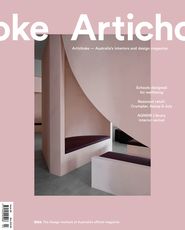
Project
Published online: 13 Sep 2023
Words:
Emily Wong
Images:
Peter Bennetts
Issue
Artichoke, September 2023

